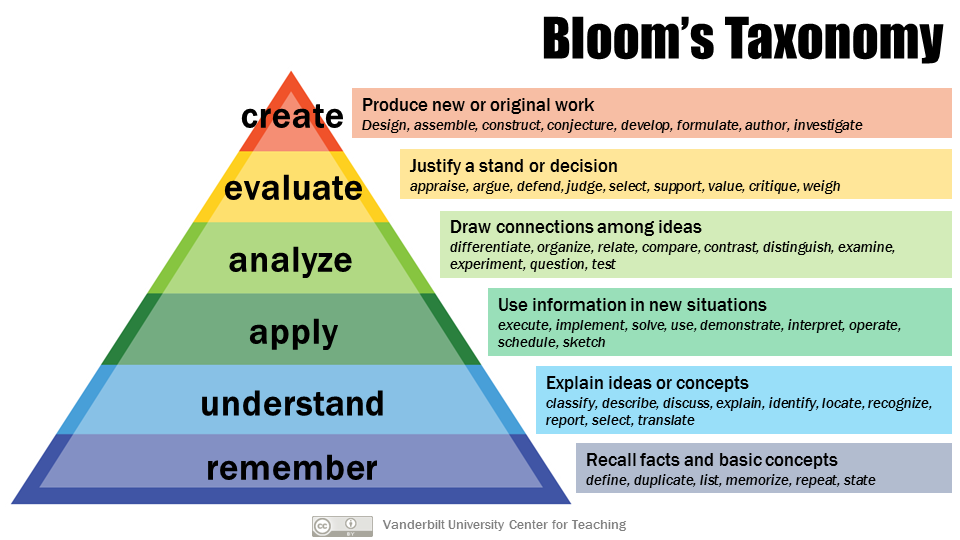Think back on some of your most memorable and enjoyable learning experiences. What made them so? Instructional design is often the secret ingredient. Students don’t tend to notice when instructional design techniques are being used, but it can make all the difference to their learning experience and outcomes.
Instructional design builds enjoyable and successful learning experiences. And it applies to any kind of learning environment, whether that’s school, college, or the workplace.
In this guide, we answer the ultimate question, “What is instructional design in education?” Plus, we explore why instructional design matters, a few need-to-know instructional design models, and how it can transform teaching.
What is instructional design?
Instructional design is a systematic process that involves planning educational experiences to meet specific learning objectives. It’s all about finding the best ways to teach a particular group of students, helping them acquire and retain knowledge or skills.
Instructional design takes into account the following:
- How to engage students
- What knowledge and skills students bring to the table
- What knowledge and skills students should leave with
- The cognitive processes behind learning
- How to help students retain new information
It also identifies and incorporates engaging and effective learning materials, like videos, quizzes, interactive activities, real-life examples, and games.
Another important part of instructional design is testing. Instructional designers continuously test and refine their design to ensure it works as well as possible for learners.
So why go to all this trouble? What are the benefits of instructional design for teachers and students?
Instructional design is a flexible but very effective framework for planning and creating courses. You can apply instructional design principles to primary, secondary, higher education, and even corporate environments.
It helps you to set clear goals and objectives for learning sessions, which means you’re more likely to meet them. It helps you to better motivate students. Plus, it enables you to personalize courses to your target learners.
The history of instructional design
Instructional design isn’t a new concept and has origins in the 1940s and World War II. Here’s a quick rundown of how instructional design has grown and changed over the years.
1940s
In World War II, psychologists and educational experts were asked to create training materials for thousands of soldiers.
They broke tasks into subtasks and treated each subtask as a separate learning goal. They also rewarded and corrected performance as the soldiers practiced their new knowledge, creating the foundational principles of instructional design.
Their process was so successful that educators tried replicating it beyond the battlefield.
1950s to 1970s
From the 1950s to the 1970s, more research helped develop the field. However, it was Robert Gagne who turned instructional design into a structured process. In the 1960s, Gagne devised the Nine Events of Instruction, which we’ll look at in more detail later.
1980s to 1990s
In the 1980s and 1990s, computers were introduced to instructional design, and training on a computer via CD-ROMs was embraced as a way to deliver interactive learning.
2000s
Fast forward to the 2000s when internet advances made elearning (or online learning) possible. Workplaces began to use eLearning for employee development and onboarding training. Instructional designers could also incorporate rich media like videos and simulations into their course content more easily.
2010s
In the 2010s, the popularity of smartphone devices made mobile learning possible. This helped instructors manage and measure the learning experience (LX) and learning outcomes. Plus, blended models that combined in-person and online learning also became popular.
What are the benefits behind instructional design?
So now that we know what instructional design is, let’s take a closer look at why it’s important.
Instructional design brings clarity and focus to your learning experiences. It aims to create high-quality and efficient learning materials that support the goals of both the learner and the educator.
Here are just a few of the core benefits of instructional design.
Sets clear goals and objectives
Instructional design defines clear learning objectives. Both learners and instructors understand the aim of the course or unit. Instructional design doesn’t just consider learner goals — you can align course content around organizational goals, too. By outlining clear goals and objectives, you’re more likely to achieve them.
Improves learner outcomes
Instructional design is all about improving learner outcomes. It helps learners acquire and retain knowledge. Teaching is much more effective with a structured approach, relevant methodology, and engaging course materials — all of which instructional design aims to create.
Uses resources well
All of the planning, analysis, and evaluation that goes into instructional design means there’s less opportunity for error. You can be confident that your lessons will be engaging and produce the desired results thanks to the groundwork you’ve put in.
Creates customized programs
Learner analysis helps you customize learning programs to meet each student’s precise needs. Instructional design discards one-size-fits-all learning modules and focuses on designing learning experiences around students, making learning more relevant and engaging.
Engages and motivates students
Instructional design makes content engaging with the help of fun and exciting activities. It uses interactive tasks, multimedia, and gamification to bring lessons to life. It also applies learning to real-life scenarios, so it’s much easier for students to practice their learning in relevant ways — and to see its value.
Promotes consistency
Instructional design helps educators create a clear course layout. Each unit has its own learner objective, and all materials, assignments, and instructions are easy to access and understand. Base templates, created by an instructional designer, can help all course creators follow the same successful principles when designing their own lessons.
Instructional design models
Instructional design takes a structured approach to course creation. Educators and psychologists have created various models to aid instructional designers. These models outline the stages that instructional designers must complete when designing a course.
Here are some of the most popular instructional design models.
ADDIE
ADDIE was developed back in the 1970s and is the generally accepted “standard model” of instructional design. ADDIE stands for analysis, design, development, implementation, and evaluation.
Let’s look at what instructional designers need to do at each stage of the process.
- Analysis: Clarify the instructional goal and what learners should take away from the course. Find out the existing skills and knowledge learners already possess. Choose the order in which to teach lessons to reach the instructional goal.
- Design: Decide which learning techniques, exercises, and assessments best suit the course. Choose the media and resources you’ll use and decide how to present and reinforce the content. Then, clarify the objectives for each unit.
- Development: Create or assemble the content and materials as per the design. Then, create lesson plans and student activities and find or create the media and resources you need to deliver each lesson or unit.
- Implementation: Develop training for instructors so they know how to motivate students, introduce the lesson, and summarize each lesson. Test the learning tech you’ll be using and prepare for launch.
- Evaluation: Evaluate the course to judge whether it has been successful and decide what changes to make for more effective learning outcomes.
Gagne’s Conditions of Learning Theory
Robert Gagne was an American educational psychologist, and his Conditions of Learning (also known as Robert Gagne’s Nine Events of Instruction) outline a sequence of events that lead to a more successful learning experience.
The Nine Events of Instruction are:
- Gain attention: Involve students in the learning process by posing a question or presenting relevant stimuli.
- Inform learners of the objective: Motivate students by clearly communicating the specific learning objectives they are expected to achieve.
- Stimulate recall of prior knowledge: Activate learners’ existing knowledge by reviewing concepts they already know.
- Present the content: Present the main lesson content to learners in logical sections using appropriate learning resources like visuals, multimedia, and real-world examples.
- Provide guidance: Provide clear examples, demonstrations, and instructions to help learners understand the content.
- Elicit performance: Encourage students to reinforce new knowledge and skills by practicing what they’ve just learned.
- Provide feedback: Give learners feedback on their performance, correcting where necessary and identifying areas for improvement.
- Assess performance: Assess learner performance in a structured way to determine whether they have achieved the learning objective using quizzes, tests, or practical exercises.
- Enhance retention and transfer: Support students in transferring what they’ve learned in class to a real-world context.
Bloom’s Taxonomy
Bloom’s Taxonomy is a framework that classifies the levels of intellectual behavior that are important in learning. It presents six categories of learning in a pyramid structure.
From bottom to top, here are the steps in the pyramid:
- Knowledge: Remembering and recalling information
- Comprehension: Understanding ideas or concepts so you can explain them
- Application: Using information in new situations to solve problems
- Analysis: Differentiating and drawing connections between different ideas
- Synthesis: Creating original work based upon new-found knowledge
- Evaluation: Checking and critiquing
Knowledge sits at the bottom of the pyramid and is the foundation for all learning, but Bloom’s Taxonomy is neither linear nor cyclical in practice. Students can (and sometimes benefit from) entering the cognitive pyramid at higher levels and working outward.
Merrill’s Principles of Instruction (MPI)
David Merrill, an educational researcher and teacher, developed Merril’s Principles of Instruction (MPI). He proposed a task-centered approach that uses problem-solving to facilitate effective learning experiences.
His approach incorporates five principles:
- Task-centered: Instruction is designed around authentic, real-world problems relevant to the learners.
- Activation: Activate learners’ existing knowledge and prior experiences to serve as a foundation for new learning.
- Demonstration: Provide clear models or examples that demonstrate the desired learning outcome.
- Application: Allow learners to use and practice their new knowledge and skills in real-world contexts or via realistic tasks.
- Integration: Support learners as they transfer their knowledge and skills to new situations.
The Dick and Carey Model
The Dick and Carey instructional design model includes all of the same stages covered by the ADDIE model, but it goes beyond these five stages to add greater depth with a further four components.
Here are the nine aspects of the Dick and Carey model:
- Identify goals: Determine the knowledge or skills a learner should possess after this course.
- Conduct analysis: Determine the knowledge and skills learners already possess.
- Analyze learners and contexts: Analyze learner behaviors, traits, and level of motivation — anything that will affect their learning journey.
- Performance objectives: Determine what the student should be able to do by the end of the course.
- Assessments: Develop a testing approach that helps teachers monitor and prove the effectiveness of the instructional design.
- Develop a strategy: Choose the most effective way to deliver the course — e.g., face-to-face, in a group, online, using lectures, worksheets, and/or practical sessions.
- Instructional materials: Gather or create the materials, tools, media, and exercises you will use.
- Formative evaluation: Use evaluation strategies like learner observation, record analysis, and interviews to evaluate learning within the instruction.
- Summative evaluation: Once the course has ended, assess the effectiveness of the instruction as a whole.
5 Instructional design best practices
Depending on which of these instructional design models you use, you’ll approach things a little differently. That said, there are some best practice tips that all of the above models embrace.
Identify your goals — and how far you are from them
A fundamental principle in all instructional design models is analysis. You can’t just leap into course creation. Instead, you need to identify the goals of your learning. What skills or knowledge do we want students to acquire?
You also need to determine where you stand in the current moment. How much do students already know? You can find out this information by conducting surveys and interviews.
Relate the content to your learners
Learning is more likely to stick when students can relate it to their lives. For an employee, that might mean relating knowledge and skills to their role. For a college student, it could mean relating knowledge and skills to an imagined future role.
Real-life scenarios are an essential part of instructional design, so keep this in mind when giving examples and designing learner activities.
Give learners control
When teaching adults, don’t be too restrictive. Instead, let your students journey through the course in the order and speed they prefer.
For example, breaking courses into micro lessons can help give students a more flexible learning experience. They can choose to complete one micro lesson and achieve one learning objective or deep-dive into several micro lessons at once.
Promote communication and be available
Instructional design makes your course content more effective, but that doesn’t mean students don’t need an instructor.
If you deliver a course digitally, remember that some students may still struggle with complex concepts. They’ll need a teacher available to support them through the more challenging parts of the course.
So, establish teacher-student communication channels on the first day of the course and encourage teachers to schedule weekly check-ins with students so they can give timely feedback and input.
Be creative — up to a point
Instructional design encourages you to use various creative methods and materials when planning courses. You can use videos, graphics, games, quizzes, and images to grab the attention and aid students’ information retention.
Just try to be a little more predictable regarding digital learning navigation — or the format of your in-person classes. Creativity is useful in terms of content, but it can be distracting and confusing when applied to course fundamentals.
Use the right LMS to support your instructional design
As we’ve seen, instructional design is an approach that aims to make teaching more efficient and effective. It helps course creators devise lessons around learner needs and objectives, motivating and engaging them to better acquire and retain information.
These teaching principles have been around since the 1940s, and you can now follow several instructional design models. ADDIE remains the most popular, but you can pick and choose, selecting the bits from each model that suit your course and your learners best.
When applying instructional design principles to elearning, it helps to have the right learning management system (LMS). An LMS makes it easy to manage, deliver, and track your learning content.
An LMS also provides an easy way to:
- Analyze existing learner knowledge
- Personalize courses
- Engage students
- Assess whether learners have met their learning objectives
Choose an LMS that is flexible and easy to use. It should simplify course management and support the goals of your organization — as well as your learners’ goals.
The best LMS will also integrate with your existing software and provide robust analytics features. It should give you access to all the data you need to make your learning experiences as effective and engaging as possible.




